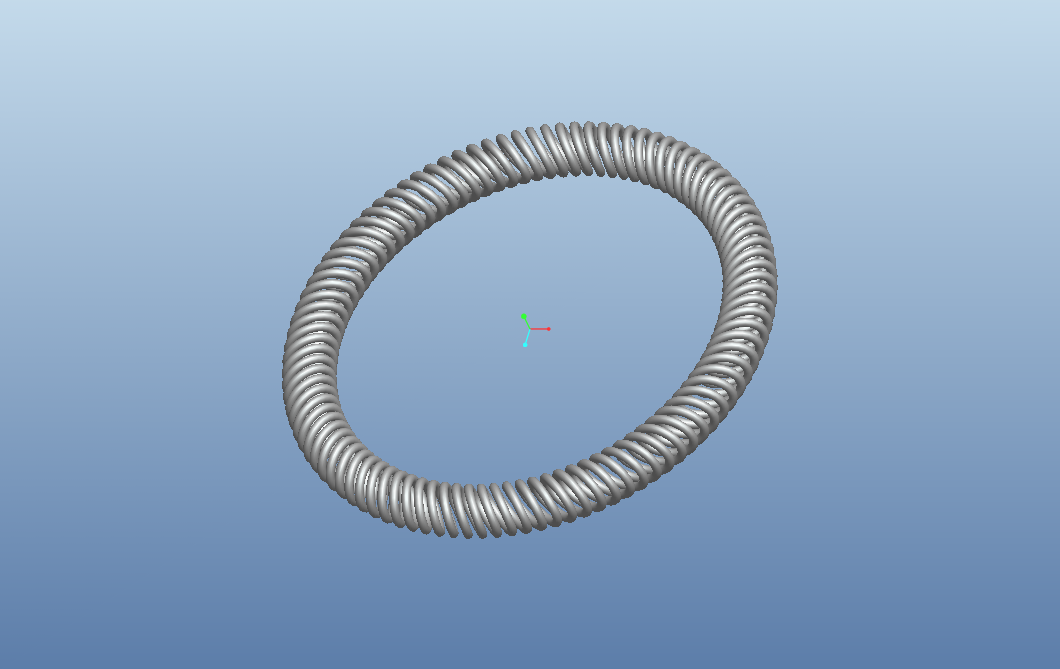Community Tip - Did you get called away in the middle of writing a post? Don't worry you can find your unfinished post later in the Drafts section of your profile page. X
- Community
- Creo (Previous to May 2018)
- Creo Modeling Questions
- Re: Modelling a 'Canted' spring in Wildfire 4.0 ?
- Subscribe to RSS Feed
- Mark Topic as New
- Mark Topic as Read
- Float this Topic for Current User
- Bookmark
- Subscribe
- Mute
- Printer Friendly Page
Modelling a 'Canted' spring in Wildfire 4.0 ?
- Mark as New
- Bookmark
- Subscribe
- Mute
- Subscribe to RSS Feed
- Permalink
- Notify Moderator
Modelling a 'Canted' spring in Wildfire 4.0 ?
Hi all,
I'm attempting to model a canted coil spring in WF4.0 but have only managed to model what is in effect a 'garter spring'. The difference being the coils of the canted spring are not perpendicular to the trajectory but are 'canted' over at an angle.
These are sometimes referred to as 'Balseal' springs.
Can anyone offer any help on this please?
I've attached an image of the spring I've modelled as well as a photo of a true canted coil spring.
Any help appreciated.
Thanks.
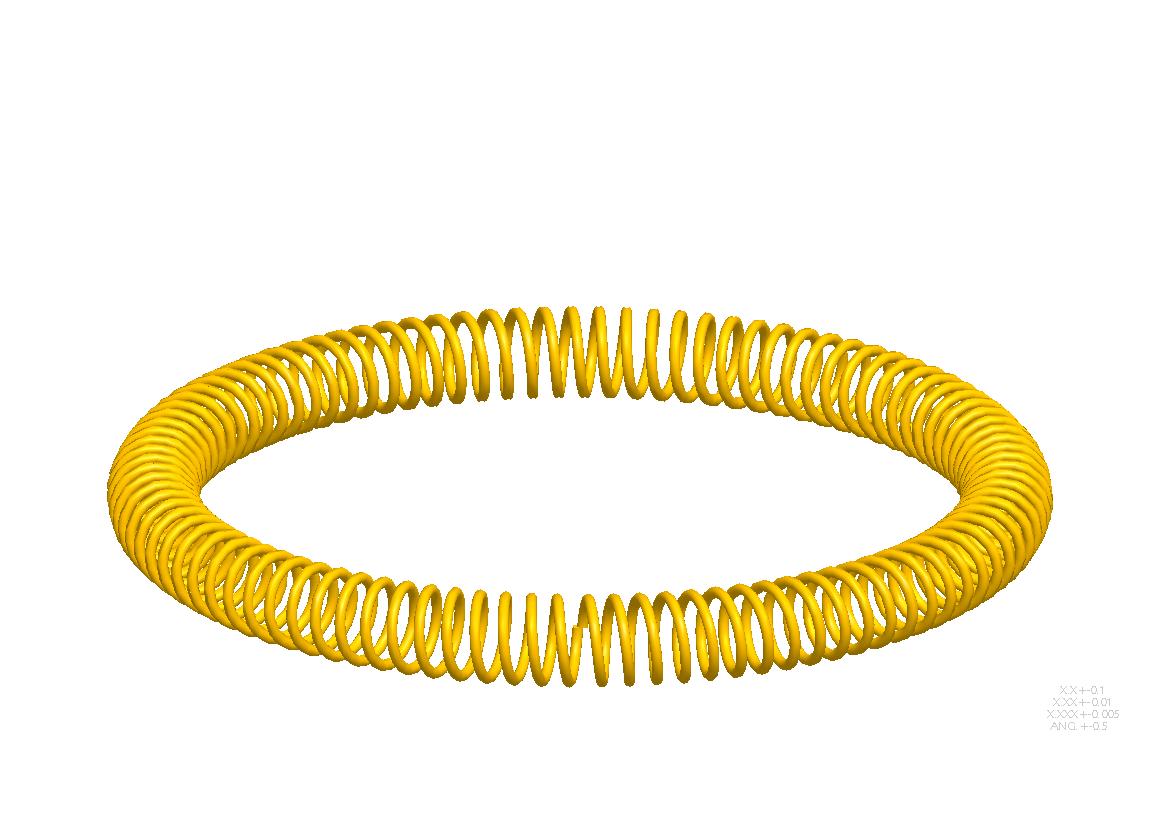
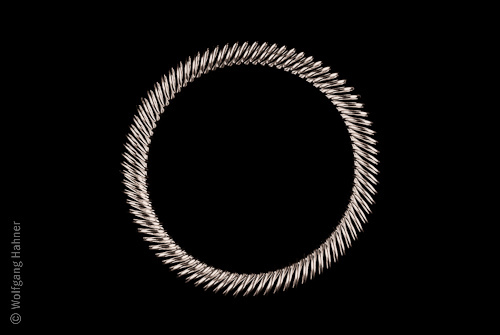
Solved! Go to Solution.
- Mark as New
- Bookmark
- Subscribe
- Mute
- Subscribe to RSS Feed
- Permalink
- Notify Moderator
Very nice!
- Mark as New
- Bookmark
- Subscribe
- Mute
- Subscribe to RSS Feed
- Permalink
- Notify Moderator
Thanks! Check your personal (not here) e-mail, I sent you and Brian a file. ![]()
- Mark as New
- Bookmark
- Subscribe
- Mute
- Subscribe to RSS Feed
- Permalink
- Notify Moderator
- Mark as New
- Bookmark
- Subscribe
- Mute
- Subscribe to RSS Feed
- Permalink
- Notify Moderator
Maybe we can stick a fork in it now ![]()
- Mark as New
- Bookmark
- Subscribe
- Mute
- Subscribe to RSS Feed
- Permalink
- Notify Moderator
Hah! Check, and MATE! ![]()
- Mark as New
- Bookmark
- Subscribe
- Mute
- Subscribe to RSS Feed
- Permalink
- Notify Moderator
Nice use of trajpar, gopal!
- Mark as New
- Bookmark
- Subscribe
- Mute
- Subscribe to RSS Feed
- Permalink
- Notify Moderator
- Mark as New
- Bookmark
- Subscribe
- Mute
- Subscribe to RSS Feed
- Permalink
- Notify Moderator
I think one of the old tutorials had a sine wave trajpar used to make a wavy washer, and if I remember, it went up and down past zero.
- Mark as New
- Bookmark
- Subscribe
- Mute
- Subscribe to RSS Feed
- Permalink
- Notify Moderator
I tried something like that but it would work. Even this technique is having trouble following the edge, complaining about an unsupported feature ![]()
- Mark as New
- Bookmark
- Subscribe
- Mute
- Subscribe to RSS Feed
- Permalink
- Notify Moderator
Okay one more... 2 features!
The 1st sweep is the whirling line around the circle trajectory (green center spiral).
The 2nd sweep has an offset that you see in the sketch.
Much less control yet interesting none-the-less.
By my count that's 5 methods so far ![]()
- Mark as New
- Bookmark
- Subscribe
- Mute
- Subscribe to RSS Feed
- Permalink
- Notify Moderator
Okay; I think this rivals the professional photographer's version ![]()
- Mark as New
- Bookmark
- Subscribe
- Mute
- Subscribe to RSS Feed
- Permalink
- Notify Moderator
I played with the "zero-crossing" trajpar line sweep some more. It appears to work only on 2D and 3D splines and only in multiples of 360 degrees. It also fails if the orientation of the line is in the plane of a 2D spline. However! You can add an angle (twist) trajpar relation to the line and it will follow it. The usefulness of the resulting edge, however is iffy.
- Mark as New
- Bookmark
- Subscribe
- Mute
- Subscribe to RSS Feed
- Permalink
- Notify Moderator
oh please don't give credit to me,i uploaded it and went to sleep,just woke up,i
found it in my backup folder,i was searching for link on mcadcentral to link,where there was thread for it,i think they have deleted it.
- Mark as New
- Bookmark
- Subscribe
- Mute
- Subscribe to RSS Feed
- Permalink
- Notify Moderator
It was a good find anyhow, Gopal. Definitely another tool for the trajpar toolbox.
- Mark as New
- Bookmark
- Subscribe
- Mute
- Subscribe to RSS Feed
- Permalink
- Notify Moderator
here is another method please check this too http://ww3.cad.de/foren/ubb/Forum12/HTML/022674.shtml
- Mark as New
- Bookmark
- Subscribe
- Mute
- Subscribe to RSS Feed
- Permalink
- Notify Moderator
Nice; that's the one Brian was talking about ![]()
Here is the cut-n-paste version:
Part relations:
/* Inside Diameter before wire
ID=20
/* # of coils
WINDINGS=50
/* Angle from "normal"
CANT_ANGLE=35
/* Helix width toward OD before wire
HELIX_WIDTH=3
/* Helix height total before wire
HELIX_HEIGHT=4
Curve Equation: Cylindrical!
r=ID/2+HELIX_WIDTH/2+HELIX_WIDTH/2*cos(t*360*WINDINGS)
theta=(t+CANT_ANGLE^2*1e-5*cos(t*360*WINDINGS))*360
z=HELIX_HEIGHT/2*sin(t*360*WINDINGS)
The only thing weird about some of these is the added "curvature" that becomes noticeable when you cant them further. The odd sweep in the last one I did and the one Gopal posted don't seem to have this.
I've attached the Creo 2.0 version of this equation version.
- Mark as New
- Bookmark
- Subscribe
- Mute
- Subscribe to RSS Feed
- Permalink
- Notify Moderator
I couldn't resist. I wanted to manage the height/width relation of the coils. Now you set the height and the width is driven by cant angle:
- Mark as New
- Bookmark
- Subscribe
- Mute
- Subscribe to RSS Feed
- Permalink
- Notify Moderator
I figured there had to be a way to do that with a curve by equation, I just can't do the math. ![]()
- Mark as New
- Bookmark
- Subscribe
- Mute
- Subscribe to RSS Feed
- Permalink
- Notify Moderator
Great article, really helped me out so far.
The issue I now have is that we fit the canted spring over a feature that is not cylindrical. Is there any way of producing this cantered spring over a shape as per below?
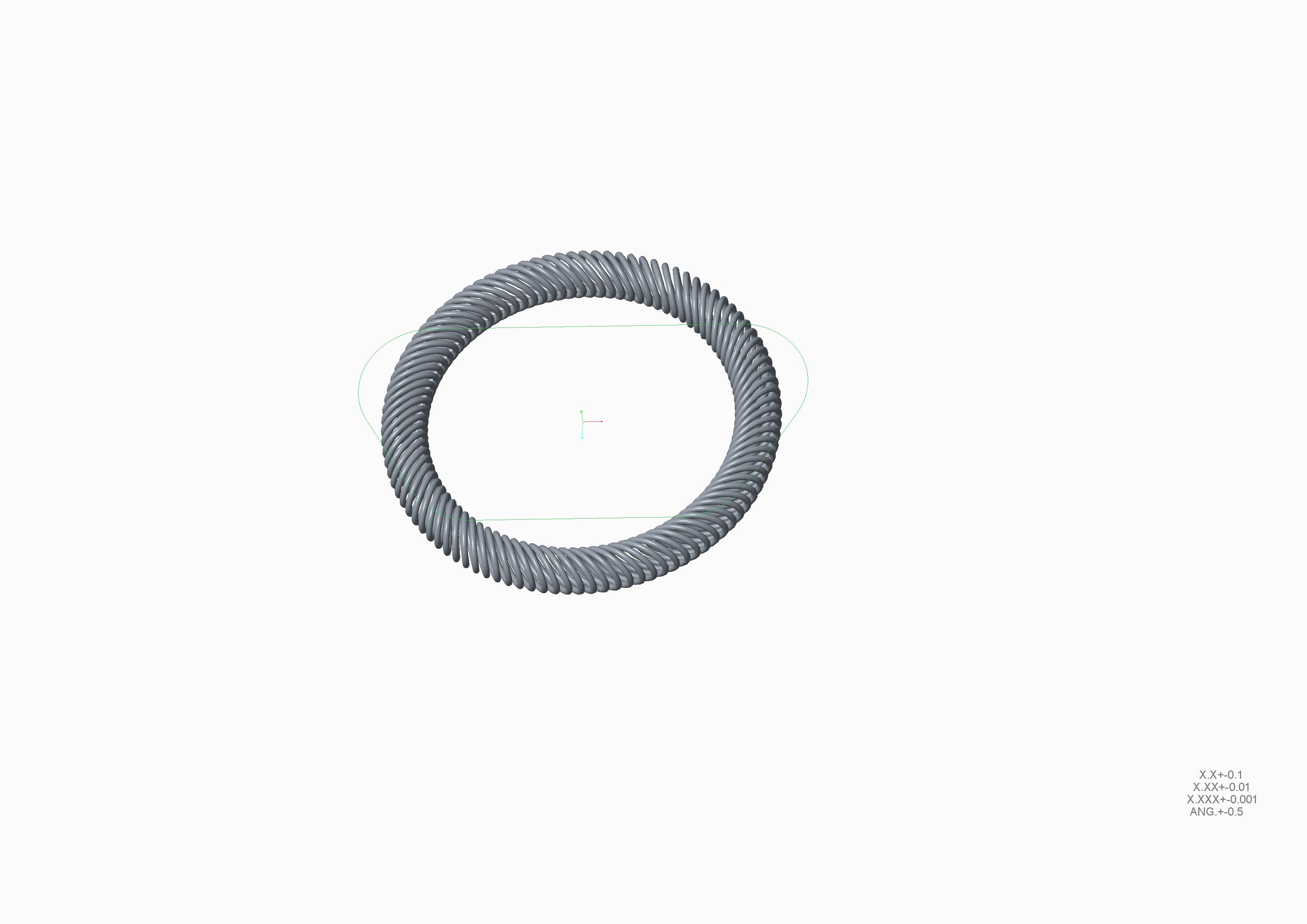
Any help would be great.
- Mark as New
- Bookmark
- Subscribe
- Mute
- Subscribe to RSS Feed
- Permalink
- Notify Moderator
Well I never thought a 'Spring' would generate so much interest and alternate techniques !
Cheers guys ![]()
- Mark as New
- Bookmark
- Subscribe
- Mute
- Subscribe to RSS Feed
- Permalink
- Notify Moderator
So did you end up with what you needed? ![]()
- Mark as New
- Bookmark
- Subscribe
- Mute
- Subscribe to RSS Feed
- Permalink
- Notify Moderator
Without actually seeing one, the question is: If you section the spring thru the toroidial axis, is the cross-section of the spring circular, or elliptical (as shown). If the manufacturing method is take a cylindrical, helical spring, "smear it" as if the side view was now a trapezoid instead of a rectangle, then you end up with an elliptical section. If the spring has a perfectly round cross-section, then a slightly different method is used, and/or the spring starts out NOT cylindrical.
Interesting either way and it's also do-able either way, now with 4 features (from 6). I'd sure like to get my hands on a large one to look at it. ![]()
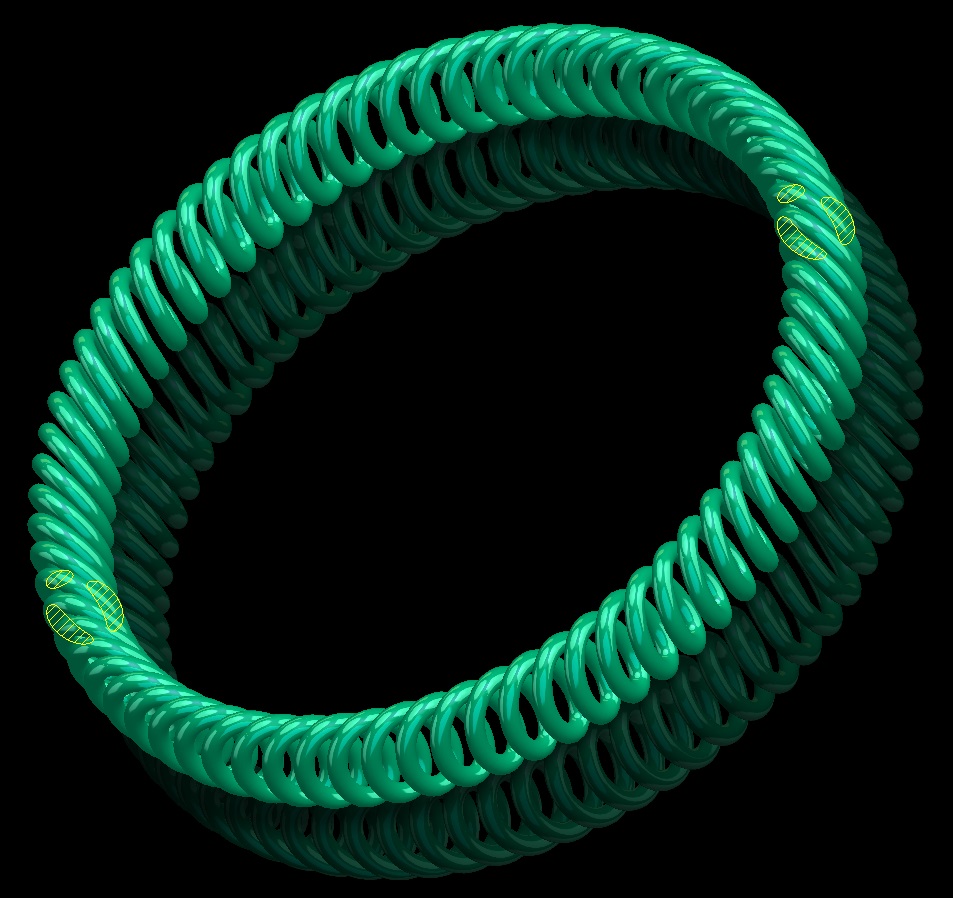
- Mark as New
- Bookmark
- Subscribe
- Mute
- Subscribe to RSS Feed
- Permalink
- Notify Moderator
Frank, these are often used in axle seals for your car. You should be able to find one in any wrecking yard.
This is a patent page that shows them oval in section:
Go to the end of the document.
edit: the Bal Seal catalog pretty much confirms this too ![]()
http://www.balseal.com/sites/default/files/rotarycatalog_092506044932.pdf
This just means you need to intersect an appropriate elliptical surface with the spun surface. ...or the equation curve with the driving sketch to manage the height to the width.
- Mark as New
- Bookmark
- Subscribe
- Mute
- Subscribe to RSS Feed
- Permalink
- Notify Moderator
I saw that, and agree that the cross-section should be elliptical. I also did a "-02" version where, unlike the green coil above, the cross-section IS perfectly circular. It was actually pretty easy to modify the -01 file (when I was removing a couple unneccessary curve features).
I think they probably manufacture the coils like we thought, by "squishing" or "smearing" them, so they end up elliptical. ![]()
I think also that if I remember these types of seals are used in motorcycle fork seals.
Thanks for the links!
This was actually a fun diversion and learning experience so thanks to Paul for starting this!
- « Previous
-
- 1
- 2
- Next »


